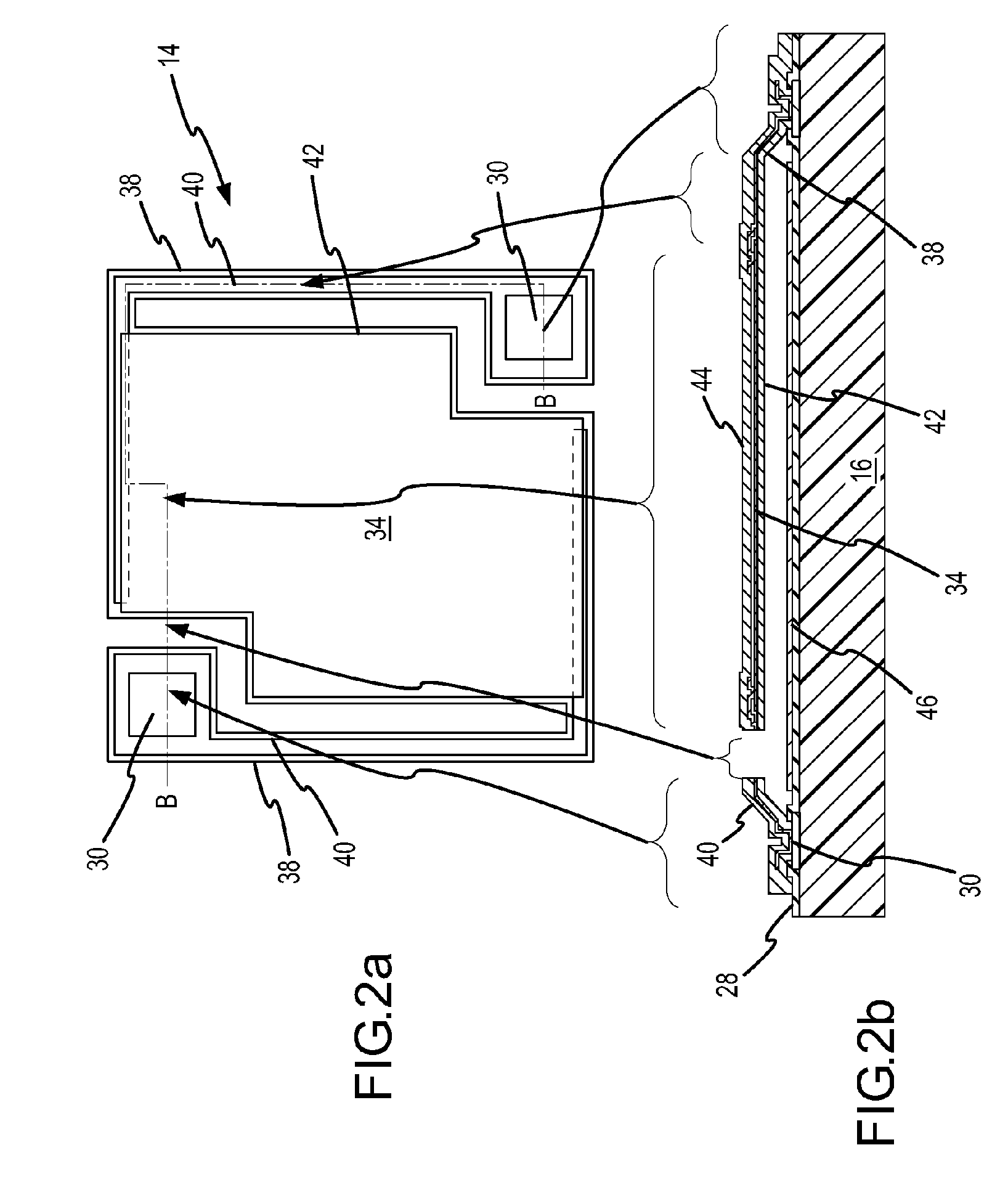Microbolometer IR focal plane array (FPA) with in-situ mirco vacuum sensor and method of fabrication
a vacuum sensor and microbolometer technology, applied in the field of microbolometer ir focal plane arrays (fpas), can solve the problems of large resistance variability, small and achieve large temperature increase, large resistance variability, and poor heat transfer
- Summary
- Abstract
- Description
- Claims
- Application Information
AI Technical Summary
Benefits of technology
Problems solved by technology
Method used
Image
Examples
Embodiment Construction
[0022]A microbolometer IR FPA is provided with in-situ vacuum sensing capability by realizing that the IR sensor microbolometer pixel element itself may be used as a vacuum sensor. The application of an electrical signal to the resistive element heats the bolometer material (“Joule heating”) thereby producing a variable resistance related to vacuum level. The degree of variability for a given material depends on the efficiency of heat transfer from the material to the surrounding environment. In a good vacuum, heat transfer is poor, and thus heat will be retained in the material to produce a relatively large temperature increase and the resistance variability will be large. In a poor vacuum, heat is readily transferred to the environment and the temperature rise will be relatively small and thus resistance variability will be small. Consequently, the variable resistance magnitude can be readout to determine the vacuum level.
[0023]In an exemplary embodiment, a microbolometer IR FPA 1...
PUM
 Login to View More
Login to View More Abstract
Description
Claims
Application Information
 Login to View More
Login to View More - R&D
- Intellectual Property
- Life Sciences
- Materials
- Tech Scout
- Unparalleled Data Quality
- Higher Quality Content
- 60% Fewer Hallucinations
Browse by: Latest US Patents, China's latest patents, Technical Efficacy Thesaurus, Application Domain, Technology Topic, Popular Technical Reports.
© 2025 PatSnap. All rights reserved.Legal|Privacy policy|Modern Slavery Act Transparency Statement|Sitemap|About US| Contact US: help@patsnap.com



